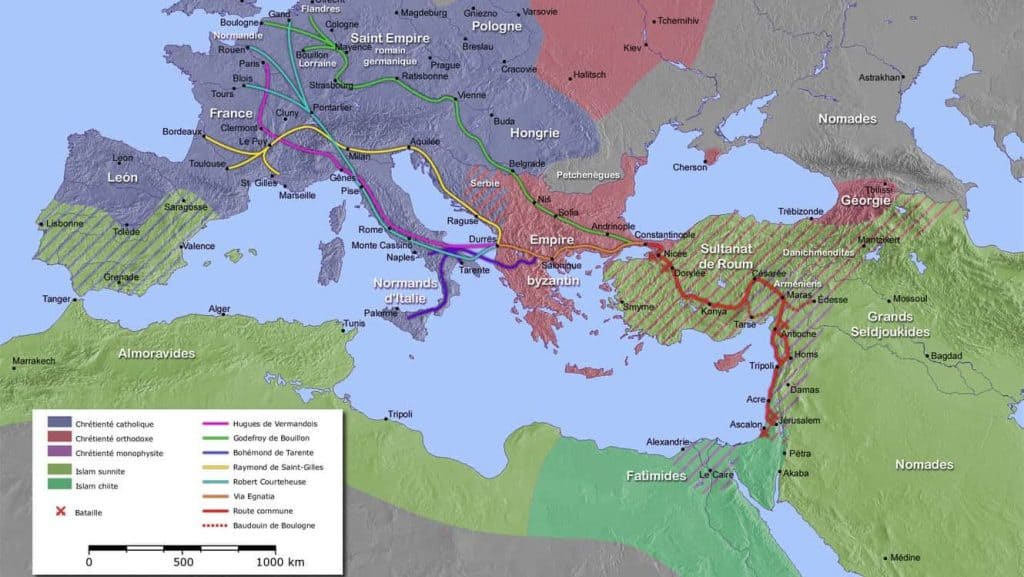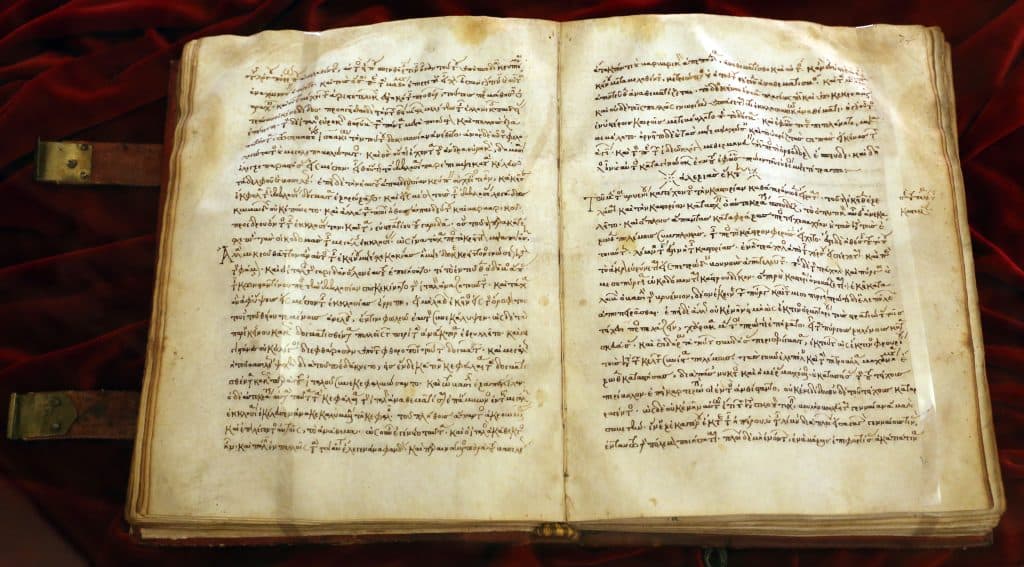The Siege of Jerusalem in 1099 is a defining episode in the history of the Crusades. This military campaign, conducted by the Christian Crusaders during the First Crusade, culminated in the capture of Jerusalem and the establishment of the Crusader Kingdom of Jerusalem. The siege was a pivotal moment that had profound and lasting consequences for the Holy Land.
First Crusade

Background:
Firstly, the First Crusade was launched in 1096 in response to Pope Urban II’s call for a holy war to reclaim Jerusalem from Muslim rule. After years of arduous campaigning, the Crusaders had achieved significant victories, including the capture of Antioch in 1098. Jerusalem remained their ultimate goal.
Key Figures:
Godfrey of Bouillon: One of the leaders of the First Crusade, Godfrey of Bouillon, was a central figure in the siege of Jerusalem. He would later become the first ruler of Jerusalem’s newly established Crusader Kingdom.
Raymond IV of Toulouse: Another prominent Crusader leader, Raymond IV, played a critical role in the siege. His forces helped to breach the city’s defenses.
Siege of Jerusalem 1187
The Siege:
The siege of Jerusalem unfolded in the following manner:
Arrival at Jerusalem: In June 1099, the Crusader armies arrived at the outskirts of Jerusalem, which was under the control of the Fatimid Caliphate.
Initial Assaults: The Crusaders launched several assaults on the city but faced determined resistance from the Muslim defenders.
Difficult Conditions: The summer heat, lack of supplies, and the scarcity of water took a toll on both Crusaders and defenders. The siege was marked by hardship and suffering on both sides.
Breaching the Walls: After weeks of intense fighting, the Crusaders managed to breach Jerusalem’s walls on July 15, 1099.
Sack of Jerusalem: The city’s fall resulted in a brutal and bloody massacre. Many of Jerusalem’s Muslim and Jewish inhabitants were killed, and the city was pillaged.
Establishment of the Kingdom of Jerusalem: Following the capture of Jerusalem, Godfrey of Bouillon declined the title of king, choosing instead the title of “Defender of the Holy Sepulchre.” This marked the beginning of the Crusader Kingdom of Jerusalem.
Anna Komnene

Credit: Sailko, CC BY 3.0, via Wikimedia Commons
Consequences:
Crusader Control: The capture of Jerusalem secured Christian control over one of the holiest cities in Christendom, which remained a significant Crusader stronghold for nearly a century.
Religious Significance: Furthermore, the siege had profound religious significance for Christians, who considered Jerusalem’s capture a divine victory. The Church of the Holy Sepulchre believed to house the tomb of Jesus, was now in Christian hands.
Muslim Response: The fall of Jerusalem galvanized Muslim leaders, including Zengi and Saladin, to unite and launch counter-crusades aimed at recapturing the Holy City.
Legacy: The events of the Siege of Jerusalem in 1099 continue to be remembered and debated in modern discussions of the Crusades and the history of the Middle East.
In conclusion, the Siege of Jerusalem in 1099 was a momentous and controversial event in the history of the Crusades. So it led to the establishment of a Christian kingdom in the Holy Land but left a legacy of religious fervor, violence, and conflict that would endure for centuries.







